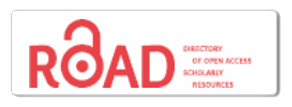PSYCHOLOGICAL FACTOR AFFECTING ENGLISH STUDENTS WILLINGNESS TO COMMUNICATE IN ENGLISH IN SOCIAL MEDIA
DOI:
https://doi.org/10.70248/jolale.v1i3.650Keywords:
Willingness to Communicate, Psychological Factor, Social MediaAbstract
The objective of the research was to find out pyschological factors and dominant factor affecting English Students′ willingness to communicate in English in Social Media. The design of this research was descriptive method. The instrument of the research was questionnaire based on MacIntyre et al. in Tuyen, Thị, & Loan (2019: 253) psychological factor affecting the students willingness to verbal communicate using English in Social Media and the questionnaire adapted from Chotipaktanasook (2017) research. The result of the research were: there are five psychological factors affecting the seventh semester students willingness to communicate in English in social media they are: Self confidence, Perceived communicative competence, learning anxiety, Students’ motivation and Personality. The dominant psychological factors affecting the seventh semester students willingness to communicate in English in social media is students motivation factor. Afterthat in communicate verbally (oral and written) the students more like or dominant use written communicate because it can make the students more confident. From the result, the researcher will give suggestion for the students: It is suggested the students can be more confident to oral communicate using English in social media. The students also diminish their anxiety to be better communicate orally using English in social media and in their daily life.
References
Alimorad & Farahmand (2021). A case study on willingness to communicate in English in the Iranian tertiary educational context. TEFLIN Journal. Vol 32 No 1, DOI: http://dx.doi.org/10.15639/teflinjournal.v32i1/1-28
Awla, Hawkar Akram. (2017). Learning styles and their relation to teaching styles, International Journal of Language and Linguistics, Vol 2 No 3, 241-243.
Berg, B. L. (Bruce L., & Lune, H. (2017). Qualitative research methods for the social sciences.Ninth Edition. Pearson
Caldwell C & Gulbrandsen, K. M. (2019). Communication, Meaning, and Identity – Guidelines and Opportunities. Research Gate. Department of Management, University of Illinois at Springfield USA
Chotipaktanasook, Nuttakritta (2016). Using Social Media In The EFL Classroom For The Enhancement Of Low Affective Filter And Willingness To Communicate. Retrieved from
https://www.fas.nus.edu.sg/cls/CLaSIC/clasic2016/PROCEEDINGS/chotipaktanasook_nuttakritta.pdf
Fatimayin, Foluke. (2018). Communication and Language Skills. School of education. National Open University of Nigeria, Lagos: Cambridge Scholars Publishing
Fitria, Diena (2020): The Influence of Students’ Attitude in Learning English and Perception on Implementation the Scientific Approach toward their English Achievement at SMA Muhammadiyah 11 Padangsidimpuan. Thesis. Islamic University of Sultan Syarif Kasim Riau
Gilakjani, Abbas Pourhossein (2017). Visual, Auditory, Kinaesthetic Learning Styles and Their Impacts on English Language Teaching, Journal of Studies in Education, Vol 2 No 1, 104-106.
Hasse, Q. A., & Young, L. A. (2010). Uses and Gratifications of Social Media: A
Comparison of Facebook and Instant Messaging. Journal of Bulletin of Science, Technology & Society. 54(1), 119-152
Hezberg, Paul A.(1983). Principles of Statistics. USA : Jhon Willey and Sons, Inc
Julia, Wood. (2009). Communication In Our Live (Fifth Edition). Cencage
learning: Boston.
Kang, S. (2005).Dynamic emergence of situational willingness to communicate in a second language. System, 33(2), 277-292
Kim, S.J. (2004). Exploring willingness to communicate (WTC) in English among Korean EFL (English as a Foreign Language) students in Korea: WTC as a predictor of success in second language acquisition. The Ohio State University
Maryansyah, Yupika (2019). A study of students willingness to communicate in English in social media. Premise Journal. Vol. 8 No 1,p-ISSN: 2089-3345, page 31-45
Mayfield, Antony. (2008) What Is social media? Published by Icrossing. USA:
Prentice Hall.
McCroskey, J. C., & Beatty, J. Michael. ( 1986). Oral Communication Apprehension. Journal of Applied Linguistics and Language Research (3) 2, 166-176.
Rindiana, Dea. (2020). Exploring Students’ Willingness to Communicate
in Classroom Conversation At 7th Bilingual Class of SMP Islam Al Azhar 21 Sukoharjo. Thesis of English Language Education Study Program. Cultures and Languages Faculty. IAIN Surakarta. 2020.
Susanti, E. (2019). Willingness To Communicate In Foreign Language Acquisition. Edukasi Lingua Sastra, 17(2), 56-63. https://doi.org/10.47637/elsa.v17i2.40
Tuyen, L. Van, Thị, T., & Loan, T. (2019). Factors Affecting EFL Students ’
Willingness to Communicate in Speaking Classes at the Vietnamese Tertiary Level. International Journal of English Literature and Social Sciences (IJELS), 4(2): 252-262
Yashima, T. (2002). Willingness to communicate in a second language: The Japanese EFL context. The Modern Language Journal, 86(i), 54- 66.
Yohana, Anna. (2020). The influence of social media on social interactions among students. Indonesian Journal of Social Sciences. Volume 12 No. 02



















